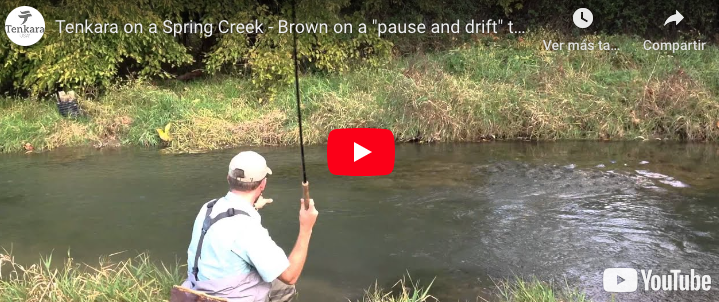Video shot by Brian Trow, of Mossy Creek Fly Fishing.
Please click on the gear icon and select the higher resolution (1080p), and/or make the video bigger by clicking on the lower left icon, in order to see the line and technique more clearly.
I took a group out for a tenkara clinic in a spring creek, Mossy Creek in Virginia. I don’t get to fish spring creeks all that often but tenkara can be super effective in those waters, particularly because you can keep the main line from touching the water (if one doesn’t it to), therefore avoiding spooking fish. My very favorite technique for spring creeks, and something that has worked in just about every spring creek I have fished so far, is the “pause-and-drift” technique. For this technique, one casts across, or slightly down, and pauses the fly in place for a second and lets the fly drift, pauses and lets it drift.
To perfect this technique, you can look for a few things (it may be hard to notice these in this video, but they are being done, or were being done on other fish):
– Strive to keep the line tight (no big slacks).
– As the fly drifts downstream, try pushing your arm out (away from your body) and downstream along with the fly. This will get the fly to go in a straighter line according to the current, rather than swinging it out of a fish’s field of strike. It is important to start with your arm close to your body so you can push the arm out. Also, pay attention to get the fly in the main feeding lines by using the current (e.g. if the stream was bending towards me and I cast inside the curve of the current the fly wouldn’t reach the feeding lane, in that case I would cast on the outer portion of the current so the fly would then come into the current/feeding lane).
– Get some of your main line in the water to keep things anchored in the current and to keep the fly from riding too high, which could make it easier for the fish to miss your fly or spit it out quickly.
– I find one of the easiest ways to achieve a “pause and drift” effect is to rotate your rod tip in circles with the circular motion towards upstream. As the rod tip reaches the top of the circle, slightly upstream, the fly will pause, as the rod tip descends in the circle (in the video it was being done as a clockwise motion, but not as well defined as I probably would have done if the current was stronger).
